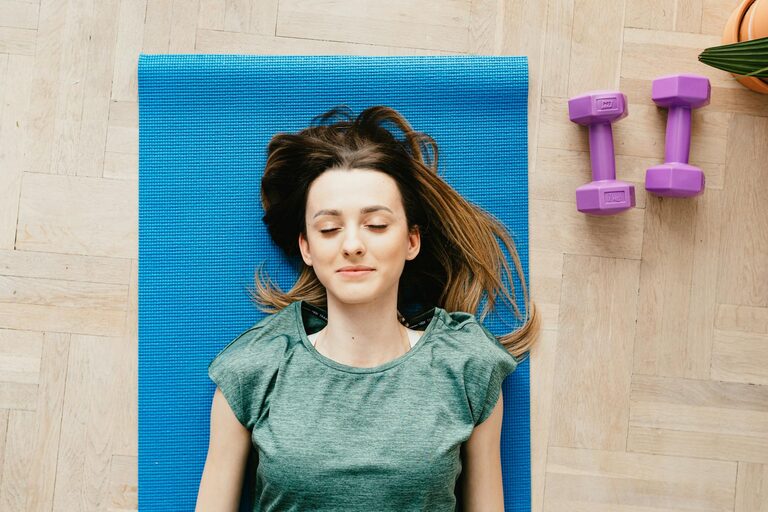Stretching is one of the easiest and most effective ways to increase flexibility, improve circulation, and reduce muscle tension. Whether you’re new to fitness or simply want to add a calming routine to your day, stretching at home can boost your physical and mental well-being. This guide will help beginners understand the basics of stretching, offer simple exercises to try, and share tips for making stretching a regular habit.
Why Stretching Matters
Many of us spend hours sitting—at a desk, driving, or watching TV—which can lead to tight muscles and stiffness. Stretching helps counteract these effects by lengthening muscles and improving range of motion. Benefits of regular stretching include:
– Enhanced flexibility and mobility
– Reduced risk of injury
– Better posture and alignment
– Relief from muscle soreness and tension
– Increased blood flow and energy
By dedicating just 10 to 15 minutes a day to stretching, you can feel more relaxed and move more easily throughout your daily activities.
When and How to Stretch
Best Time to Stretch
You can stretch at any time, but some times work better depending on your goals:
– After waking up: Helps loosen stiff muscles and wake your body gently.
– Before/after exercise: Prepares muscles for movement and aids recovery afterward.
– During breaks: Especially if you sit a lot, short stretches during the day help reduce stiffness.
– Before bed: Stretching can promote relaxation and support better sleep.
Stretching Tips for Beginners
– Warm up first: Stretching cold muscles can cause injury. Light activity like walking or marching in place for 3-5 minutes warms up your body.
– Move into the stretch slowly: Avoid bouncing or forcing your body into uncomfortable positions.
– Hold stretches gently: Aim to hold each stretch for 15–30 seconds. Breathe deeply and relax.
– Stretch both sides equally: Balance is important for body alignment.
– Listen to your body: You should feel tension but never pain.
Simple Stretches to Start At Home
Here are some easy stretches targeting common tight areas, suitable for beginners.
Neck Stretch
- Sit or stand tall.
- Slowly tilt your head to one side, bringing your ear toward your shoulder.
- Hold for 20 seconds, then switch sides.
- Stand or sit with arms relaxed.
- Roll your shoulders forward slowly 10 times.
- Reverse direction and roll backward 10 times.
Shoulder Rolls
This helps relieve neck and shoulder tension.
Cat-Cow Stretch (Spine Mobility)
- Start on hands and knees with a neutral spine.
- Inhale as you arch your back, lifting your head and tailbone (Cow).
- Exhale as you round your spine, tucking your chin and pelvis (Cat).
- Repeat 8-10 times slowly.
- Sit on the floor with legs extended.
- Slowly hinge at your hips to lean forward toward your toes.
- Keep your back as straight as possible.
- Hold the stretch for 20-30 seconds.
- Stand tall, holding a chair or wall for balance.
- Bend your right knee and bring your heel toward your buttocks.
- Hold your ankle with your hand and keep knees close together.
- Hold for 20 seconds, then switch legs.
- Lie on your back with one leg extended on the floor.
- Loop a towel around the ball of your other foot.
- Gently pull the towel to lift your leg while keeping it straight.
- Hold for 20-30 seconds, then switch legs.
- Stand facing a wall with hands placed on it.
- Step one foot back, keeping the heel flat and leg straight.
- Bend the front knee and lean forward until you feel a stretch in your calf.
- Hold 20 seconds, switch sides.
Seated Forward Bend
Standing Quadriceps Stretch
Hamstring Stretch with a Towel
Calf Stretch
Creating a Stretching Routine
Here are some tips to create a routine that fits your lifestyle:
– Set a specific time: Choose a consistent time daily to stretch and stick to it.
– Keep it short and simple: Even 10 minutes can make a difference.
– Combine stretches: Focus on major muscle groups or areas where you feel tight.
– Use reminders: Set alarms or notes to prompt you.
– Track your progress: Notice how your flexibility and comfort improve over time.
Final Thoughts
Stretching at home is a gentle and adaptable practice that benefits everyone. As you get comfortable with these basic stretches, you can explore yoga or Pilates to deepen your flexibility and strength. Remember, the key is consistency and listening to your body. Start slow, enjoy the process, and celebrate every small improvement in your flexibility and well-being.
Ready to stretch your way to comfort and flexibility? Grab a mat, find a quiet space, and give these beginner stretches a try today!

